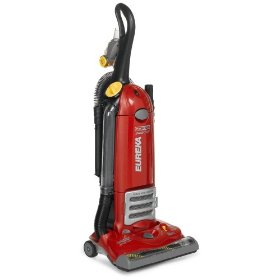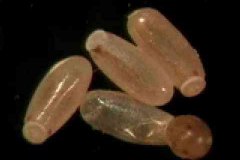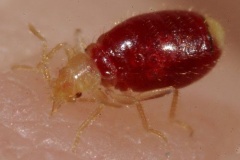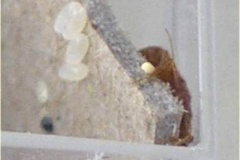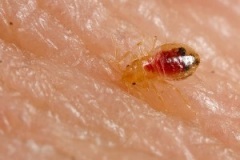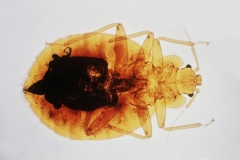Dont let the bed bugs bite is a common phrase that people say before going to bed. Unfortunately, if you have bed bugs, good wishes arent enough to get rid of these little biting critters for good. Bed bug bites can cause itchy red clusters of bumps on your skin which are also called bed bug rashes. This severe itching creates a strong urge to scratch and is very frustrating. You may even lose sleep scratching through the night and worrying about the bugs in your bed.
Getting rid of bed bug bites can be very effective with home remedies. Many home remedies help to treat the itchy bites that these nasty bugs cause and also help to reduce skin irritation, reduce redness and swelling as well as prevent infection. Some natural remedies for treating bed bug bites like apple cider vinegar, witch hazel, and oatmeal reduce itching and swelling around the affected skin area. Other remedies include coconut oil, tea tree oil, or aloe vera to soothe the itchy skin and the inflammation around the bed bug rash.
Before learning about the best home remedies for treating bed bug bites, lets look at the signs and symptoms of bed bug bites.
Bed bugs are tiny parasitic insects that range in size from 1mm to 7mm. According to the Centers for Disease Control and Prevention, these little pests feed on the blood of humans and animals.1 The bite from a bed bug can cause a bed bug rash which is an allergic reaction that makes the surrounding area inflamed, red, and itchy. Sometimes bed bug bites are confused with flea bites. Flea bites on humans occur at any time you are around the house, bed bugs are mostly active when its dark, so you will be bitten while you are asleep.
Dr. Varnada Karriem-Norwood on WebMD says that the red, itchy bites usually occur on the arms or shoulders, but they can also be on the face and be a reason for itchy hands. The red bumps on the skin tend to be in straight rows, although they can be in clusters. Although bed bugs dont carry disease, scratching the skin irritation can lead to secondary skin infections.2
Bed bug rash or bite marks may appear several hours or even several days after the bite has occurred. The Centers for Disease Control and Prevention say that it may even take up to 2 weeks for bed bug rash and bite marks to become itchy, inflamed spots, depending upon the persons allergic reaction to the bites.
Usually bed bug rash or bites last several days and then slowly fade, but in some cases they can last longer if the bitten person is more sensitive to the bites. Some people may not have any reaction at all, while others who are more sensitive can develop bite marks or rashes that cause severe itching.
You can spot bed bug signs by carefully examining your bed linen. Some of the telltale signs of bed bugs are exoskeletons left behind after molting, tiny blood spots on your mattress or bed sheets, and a sweet musty odor.1
Doctors from the Mayo Clinic recommend checking in the cracks and crevices of beds, headboards, bed frames, and in the seams of mattresses.3 Generally, bed bugs live within 8 feet of sleeping areas.
To eliminate bed bug infestation, please read my article about the top 10 home remedies to get rid of bed bugs naturally. Youll discover effective bed bug treatments and detailed instructions how to use them.
To get rid of bed bug bites, its important to reduce the itching and inflammation. This will prevent you from scratching the itchy bumps and rashes that the bed bug bites cause.
The simplest way to stop bed bug bites itching fast is to apply a cold compress to soothe the red bed bug rash. The effect of cold helps to calm the nerve endings and take the itch out of the bite.
Many doctors recommend a cold compress to reduce pain and redness of a bed bug bite. Dr. Charles Patrick Davis on eMedicineHealth says to first of all wash the affected skin area. Then place a cold pack or ice wrapped in a towel on the affected skin area.4 Leave on for around 10 minutes. Use the cold compress as needed to relieve the itchy skin and reduce redness causes by bed bug bites.
Raw apple cider vinegar (ACV) is a great natural remedy to make bed bug bite go away because its acidic properties relieve itching and redness. ACV contains acetic acid which is a natural anti-inflammatory and also acts as an antiseptic. Applying apple cider vinegar to bug bites can also help to prevent any secondary skin infection.
Scientists have found that topical applications that have a low pH level (acidic) help to relieve pruritus (skin itching).5 Apple cider vinegar has the effect of balancing the skins pH level which is higher when inflamed.
The journal PLoS One also found that acetic acid protects the skin from bacterial infections and speeds up the healing process.6
To use apple cider vinegar to relieve the irritation caused by bed bug bites, please do the following:
Washing your face with apple cider vinegar is another reason to use ACV to quickly cure bed bug bites around your nose and cheeks.
Another great and easy home remedy to alleviate the discomfort caused by bed bug bites is to apply lemon juice. Because of its citric acid content, lemon juice has medicinal properties that work similar to apple cider vinegar in relieving itchy skin.
To get fast relief from bed bug bites, dip a cotton ball in lemon juice and apply to the itchy bed bug rash. Repeat the process 2 or 3 times a day to stop the bites itching.
Use the natural astringent properties of witch hazel to dry out bed bug rashes quickly and reduce the urge to scratch. Witch hazel contains tannins which not only help get rid of itching caused by bed bug bites but also have antibacterial properties that prevent infections. Witch hazel is also one of the best home remedies to get rid of flea bites.
Doctors on WebMD say that witch hazel is applied directly to the skin to reduce itching, pain, and swelling caused by insect bites as well as mite bites.7 Studies into the anti-inflammatory effects of witch hazel found that the astringent properties help to reduce skin inflammation and improve its appearance.8
To soothe an itchy bed bug bite, you can apply witch hazel directly to the affected skin area. This is what you should do:
Baking soda is a natural antibacterial agent that can help dry out inflamed skin rashes and help to cure bed bug bites. Baking soda is also anti-inflammatory and will reduce the itchy sensation from the bed bug rash on your skin.
Doctors recommend using baking soda to soothe the redness, itching, and stinging that are caused by a mild reaction to an insect bite such as bed bug bite.9 A study into the antibacterial activities of baking soda found that it is also effective against a number of strains of bacteria.10
Make a home remedy for getting rid of bed bug bites by combining some water with baking soda. Here is how to make your anti-itch paste:
The baking soda treatment will help to protect the bed bug rash on your skin from becoming infected with germs. When combined with other ingredients, baking soda can help you get gorgeous, healthy-looking skin.
Pure aloe vera gel will help to get rid of the itch from an insect or bed bug bite. Aloe vera is rich in soothing properties that reduce inflammation and nourish your skin. To relieve skin itching, you can use aloe vera in its pure form straight from the plant leaf or you can buy pure aloe vera gel.
Aloe vera is known for its healing effect on the skin. In a study published in the journal Skin Pharmacology and Physiology on the anti-inflammatory properties of aloe vera, it was found to be more effective at reducing skin irritation than 1% hydrocortisone gel.11 Hydrocortisone creams are often prescribed for insect bites.
It is very easy to use pure aloe vera gel to heal bed bug bites. All you have to do is apply the aloe vera gel liberally to the affected skin area a few times a day. The soothing effect of aloe vera on the skin will quickly get rid of itching and help to protect your skin.
Oatmeal is a natural remedy for skin inflammation and will soothe bed bug bites and other insect bites. The anti-inflammatory, antioxidant, and cleansing effect of oatmeal quickly reduces irritation, itching, redness, and swelling associated with painful bites.
A study published in the Journal of Drugs and Dermatology found that applying a topical treatment of colloidal oatmeal (ground oatmeal) helped reduce itching, skin rashes, burns, and eczema.12 In fact, colloidal oatmeal is registered at the U.S. Food and Drug Administration to provide temporary relief of itching and irritation caused by insect bites.13
To get rid of bed bug bites with oatmeal, here is an effective home remedy:
You can also add some honey to the oatmeal anti-itch remedy to help boost its antibacterial potential.
Oatmeal is so effective at getting rid of any kind of skin irritation, you can use it in a warm bath as a home remedy to stop itching all over your body.
Honey, especially Manuka honey, contains powerful medicinal properties that can soothe an itch and heal bacterial skin infections. A dab of raw honey on the bed bug bite may be all you need to soothe the irritation. Honey should also be applied to insect bites to help prevent secondary skin infections developing.
The Mayo Clinic reports that there is some evidence that honey can be used as a topical itch treatment and it can help form a protective barrier on the skin.14 Studies have shown that honey can help reduce scalp itching and prevent infections.15
All you have to do to relieve itching from a bed bug bite and speed up the healing process is apply a little honey to the itchy spot. You can repeat as necessary throughout the day whenever you feel the urge to scratch the bed bug rash.
Another natural remedy to cure bed bug bites and soothe the discomfort they cause is to put some slices of cucumber on the itch. Cucumber is especially soothing on the bed bug rash if you take it straight out the refrigerator before applying it.
A medical study found that cucumbers have anti-inflammatory activities and help to inhibit inflammatory enzymes like COX-2. Cucumbers are also rich in vitamin C, E, and A all of which are essential for keeping skin healthy.16
Place slices of cooled cucumber directly on the bed bug rash to ease pain, reduce inflammation, and quickly stop the itch. Use as necessary every time the insect bite starts itching.
Relieving the discomfort of bed bug bites is one great way to use your old tea bags. There are various types of tea that you can use to soothe a painful itchy bite.
Black tea contains tannins which act as an astringent on the skin to reduce itching. The Journal of Pharmacognosy and Phytochemistry says that the tannins are released when the black tea is put in hot water. The journal reports that tannins can be used to heal the skin and form a protective layer over tissue.17
Chamomile tea has a soothing effect on the skin as well as the mind. Studies into the anti-inflammatory and protective properties of chamomile show that its a great herb to relieve itching and inflammation and speed up the healing process of skin infections. Chamomile tea has been shown to be more effective than 1% hydrocortisone creams and is safe for long-term use.18
To use black tea bags or chamomile tea bags, you should place one teabag in a cup of hot water. Leave to infuse for a few minutes. Place the tea bag in the refrigerator to cool is down. Use as a cold compress on the itchy bed bug bite to get rid of the irritation and to get a quick itch relief.
You can also use the essential oil of chamomile to relieve itching. The University of Maryland recommends putting 5 to 10 drops of chamomile oil in a warm bath to soothe bed bug bites.19
There are many other essential oils for skincare that are excellent home remedies to reduce swelling and redness and prevent itching caused by bed bug bites.
Apart from tea tree oil and lavender oil, which can be applied directly as a spot treatment, essential oils should always be diluted before using on the skin. Coconut oil is a great carrier oil to use to reduce itching and prevent skin infections.
Coconut oil has many beneficial medicinal properties. The journal Pharmaceutical Biology reported that coconut oil reduces inflammation and eases pain.20 Read more about the 10 secret ways to use coconut oil on your skin.
When using essential oils with coconut oil on your skin, you should add 2-3 drops of essential oil in 1 tablespoon of coconut oil.
The journal Clinical Microbiology Reviews reported on studies showing that tea tree oil shows anti-inflammatory and antibacterial activities. It can be added to coconut oil to help heal bed bug bites speedily and kill off any germs that may cause infection.21
If you have just one or two itchy bed bug bites, you can put a drop of tea tree oil directly on the spot to get instant itch relief. If however you have a sensitive skin or need to apply it on a larger skin area, mix a few drops of tea tree oil in a tablespoon of coconut oil and apply to the bed bug bites to reduce skin irritation and inflammation.
Using tea tree oil is also good for treating spider bites and cockroaches bites.
Tea tree oil is also one of the ingredients in my effective bed bug spray.
A study from 2015 found that lavender essential oil contains antioxidant, pain relieving, and anti-inflammatory properties. Lavender oil was just as effective as dexamethasone, a pharmaceutical drug that is sometimes prescribed to relieve allergic reactions and reduce swelling.22
Another study found that lavender oil helped to reduce allergic skin reactions when used topically.23
Like tea tree oil, you can dab a drop of lavender oil directly onto a small itchy bed bug bite. For larger bed bug rash area, you should mix lavender oil with coconut oil to make a topical anti-itch cream.
The University of Maryland reports that calendula oil is an effective treatment for itchy skin inflammation.24 You can use a few drops of calendula oil mixed with coconut oil. Or you can buy a calendula cream to relieve itchiness from bed bug bites.
Usually, home remedies quickly and effectively heal bed bug bites and all your symptoms should be gone within a week.
However, doctors from the Mayo Clinic25 advise that you should see a doctor if you have a severe allergic reaction to the bed bugs or if the rashes caused by the bites start to blister.
Read my other related articles:1. The Top 10 Home Remedies to Get Rid of Bed Bugs Naturally2. The Best Bed Bug Sprays to Kill Bed Bugs Fast 3. Mite Bites: Warning Signs and Natural Treatments4. Itching All Over the Body Causes and Natural Treatments5. What Do Flea Bites on Humans Look Like?6. How to Effectively Kill Bed Bugs Using Diatomaceous Earth (DE)
Read more from the original source:
How to Get Rid of Bed Bug Bites: The Most Effective Home Remedies

 Residence
Residence  Location
Location 
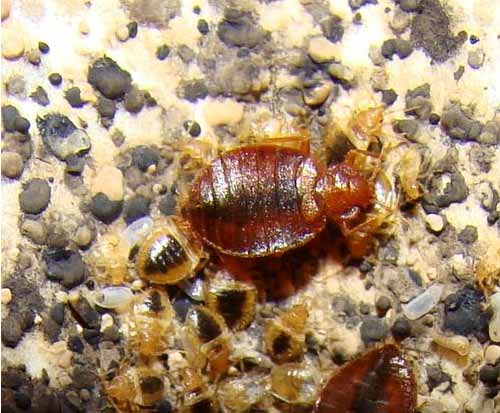 The distribution of bed bugs is assisted by the fact that they are flat and thin and are therefore able to squeeze in very narrow cracks and crevices such as floorboard, skirting boards, power points, and brick feature walls. They are very difficult to detect because of their skillfulness in finding hiding places.
The distribution of bed bugs is assisted by the fact that they are flat and thin and are therefore able to squeeze in very narrow cracks and crevices such as floorboard, skirting boards, power points, and brick feature walls. They are very difficult to detect because of their skillfulness in finding hiding places. Another kind of bed bugs is the tropical bed bug, or cimex hemipterus. This bed bug has been guessed to be distributed in the tropics a long time ago. However, it was only recently recognized by the medical entomology department. This department can tell you more information about the distribution of the cimex hemipterus in the tropics.
Another kind of bed bugs is the tropical bed bug, or cimex hemipterus. This bed bug has been guessed to be distributed in the tropics a long time ago. However, it was only recently recognized by the medical entomology department. This department can tell you more information about the distribution of the cimex hemipterus in the tropics. Bed bugs can also be distributed to clothing, in bedding or even your luggage. However, much to their dismay, they do not have appendages that could allow them to cling, possibly to hair feathers or fur. This would bring you to the conclusion that bed bugs leave to feast on their hosts but once they finished they leave their hosts since they have nothing to cling with in the first place.
Bed bugs can also be distributed to clothing, in bedding or even your luggage. However, much to their dismay, they do not have appendages that could allow them to cling, possibly to hair feathers or fur. This would bring you to the conclusion that bed bugs leave to feast on their hosts but once they finished they leave their hosts since they have nothing to cling with in the first place. Bed bugs are also distributed finely in human dwellings, bat caves andbird'snests. In truth, the habitats that have been recently mentioned are the ones found to be most suitable for these said bed bugs. Why? It seems to be quite obvious. Bed bugs are distributed to these habitats because of their offered warmth and hosts they can feed on.
Bed bugs are also distributed finely in human dwellings, bat caves andbird'snests. In truth, the habitats that have been recently mentioned are the ones found to be most suitable for these said bed bugs. Why? It seems to be quite obvious. Bed bugs are distributed to these habitats because of their offered warmth and hosts they can feed on.  Bed bugs are more usually not so prone to activity during the night, but will feed on anything during the day, especially when hunger strikes them. So, most likely, these said bed bugs would be distributed to trees and leaves and roots and absolutely anything that they can land on and strike their fancy.
Bed bugs are more usually not so prone to activity during the night, but will feed on anything during the day, especially when hunger strikes them. So, most likely, these said bed bugs would be distributed to trees and leaves and roots and absolutely anything that they can land on and strike their fancy. Adult bed bugs live exclusively as parasites that feed mainly on warm-blooded animals, the best example, and probably the most usual, would be human beings. Since bed bugs can be distributed to poor housing conditions, then it would be conclusive that the infestations o fbed bugs can be found in these places too. And if these said bed bugs do get distributed to domestic premises, then the room they will most probably attack is the bedroom.
Adult bed bugs live exclusively as parasites that feed mainly on warm-blooded animals, the best example, and probably the most usual, would be human beings. Since bed bugs can be distributed to poor housing conditions, then it would be conclusive that the infestations o fbed bugs can be found in these places too. And if these said bed bugs do get distributed to domestic premises, then the room they will most probably attack is the bedroom. The transmission of bed bug eggs is also an issue. It is not uncommon for the live bedbugs amongst an infestation to be completely eradicated during an effective treatment cycle only to have the remaining or surviving eggs hatch and re infest the location. The bed bug eggs themselves are usually unaffected by and/or not killed by most approved pesticides. The eggs can also have an incubation period of up to several weeks and may be deposited in hidden areas that are difficult to penetrate, difficult to find, or simply hidden away from what otherwise would have been a quick lethal treatment (i.e. lethal treatment such as the killing of a bed bug's eggs through heat'”by hot ironing fabric surfaces where bed bugs have hidden, through steaming [typically using a fabric steamer], via direct machine drying, or through a procedural use of boiling water, etc.).
The transmission of bed bug eggs is also an issue. It is not uncommon for the live bedbugs amongst an infestation to be completely eradicated during an effective treatment cycle only to have the remaining or surviving eggs hatch and re infest the location. The bed bug eggs themselves are usually unaffected by and/or not killed by most approved pesticides. The eggs can also have an incubation period of up to several weeks and may be deposited in hidden areas that are difficult to penetrate, difficult to find, or simply hidden away from what otherwise would have been a quick lethal treatment (i.e. lethal treatment such as the killing of a bed bug's eggs through heat'”by hot ironing fabric surfaces where bed bugs have hidden, through steaming [typically using a fabric steamer], via direct machine drying, or through a procedural use of boiling water, etc.).  This stubborn tendency of bed bug infestations towards re-emergence can be incredibly problematic and made all the more difficult to detect due to a now smaller size of the newly re-emerged bed bug nymphs. Re infestation can also be made more difficult to discover early enough due to a corresponding decrease in the 'size' of infestation symptoms'”such as fewer and now much smaller fecal droppings that may be scattered in between and more difficult to detect (droppings that may then be found resembling lone, tiny pinhead-sized dabs from a black permanent-marker). As well as other 'smaller' infestation symptoms such newer sloughed off skins that tinier in size and the potential for hiding locations that are more narrow and thus harder to find during re infestation, etc. The result of a recurrent bed bug infestation can prove dispiriting, disheartening, demoralizing, and even depressing to households that may have already gone great lengths (in expense, labor, treatment, containment measures, lost furniture, etc.) to try and contain an infestation. Fortunately, more effective (as well as cost-effective) approaches towards successful treatment can come with experience.
This stubborn tendency of bed bug infestations towards re-emergence can be incredibly problematic and made all the more difficult to detect due to a now smaller size of the newly re-emerged bed bug nymphs. Re infestation can also be made more difficult to discover early enough due to a corresponding decrease in the 'size' of infestation symptoms'”such as fewer and now much smaller fecal droppings that may be scattered in between and more difficult to detect (droppings that may then be found resembling lone, tiny pinhead-sized dabs from a black permanent-marker). As well as other 'smaller' infestation symptoms such newer sloughed off skins that tinier in size and the potential for hiding locations that are more narrow and thus harder to find during re infestation, etc. The result of a recurrent bed bug infestation can prove dispiriting, disheartening, demoralizing, and even depressing to households that may have already gone great lengths (in expense, labor, treatment, containment measures, lost furniture, etc.) to try and contain an infestation. Fortunately, more effective (as well as cost-effective) approaches towards successful treatment can come with experience. 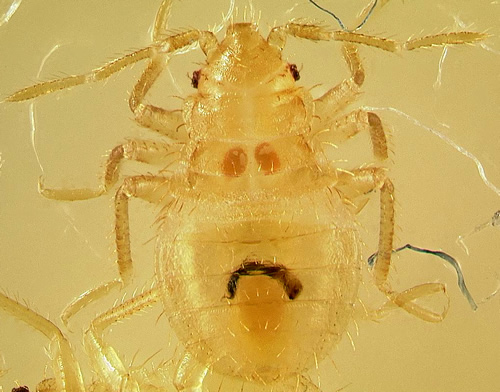 General machine washing and drying on high heat will disinfect most clothing of potential bed bugs and will kill their eggs as well. In the 18th century,turpentinewas used in combination withhenna(Lawsonia inermis, aka camphire) flowers and alcohol, as an insecticide that also reputedly killed bed bug eggs. The use of a fabric steamer on the infestations will kill the eggs and the bugs instantly. The bed bugs cannot handle the intense heat and are killed in a couple of seconds. Since steam will penetrate the pores of a mattress, it can reach deep into the corners of beds.
General machine washing and drying on high heat will disinfect most clothing of potential bed bugs and will kill their eggs as well. In the 18th century,turpentinewas used in combination withhenna(Lawsonia inermis, aka camphire) flowers and alcohol, as an insecticide that also reputedly killed bed bug eggs. The use of a fabric steamer on the infestations will kill the eggs and the bugs instantly. The bed bugs cannot handle the intense heat and are killed in a couple of seconds. Since steam will penetrate the pores of a mattress, it can reach deep into the corners of beds.  Yet another perceived cause of the bed bug resurgence is the growing push to recycle mattresses. Not only are mattresses to be recycled, collected, and stored with those already processed, but it is very difficult to ensure that no bed bugs or eggs survive the processing. In the 18th century,turpentinewas used in combination withhenna(Lawsonia inermis, aka camphire) flowers and alcohol, as an insecticide that also reputedly killed bed bug eggs. Use of steam or by sprayingrubbing alcoholon any visible insects is done to effectively rid bed frames of adult bed bugs and eggs, although it does not serve as a permanent treatment.
Yet another perceived cause of the bed bug resurgence is the growing push to recycle mattresses. Not only are mattresses to be recycled, collected, and stored with those already processed, but it is very difficult to ensure that no bed bugs or eggs survive the processing. In the 18th century,turpentinewas used in combination withhenna(Lawsonia inermis, aka camphire) flowers and alcohol, as an insecticide that also reputedly killed bed bug eggs. Use of steam or by sprayingrubbing alcoholon any visible insects is done to effectively rid bed frames of adult bed bugs and eggs, although it does not serve as a permanent treatment. Bedbugs show strong resistance to dessication, able to survive low humidity and a 35'“40°C range even with loss of one-third of body weight; earlier life stages are more susceptible to drying out than later ones.The thermal death point for the common bedbug (C. lectularius) is high: 45°C (113°F), and all stages of life are killed by 7 minutes of exposure to 46°C (115°F). However, in heating buildings, to ensure that no bedbugs survive in cooler locations, theUS Department of Defense recommends using a temperature of at least 49°C (120°F), at 20-30% relative humidity, for at least 20 minutes.
Bedbugs show strong resistance to dessication, able to survive low humidity and a 35'“40°C range even with loss of one-third of body weight; earlier life stages are more susceptible to drying out than later ones.The thermal death point for the common bedbug (C. lectularius) is high: 45°C (113°F), and all stages of life are killed by 7 minutes of exposure to 46°C (115°F). However, in heating buildings, to ensure that no bedbugs survive in cooler locations, theUS Department of Defense recommends using a temperature of at least 49°C (120°F), at 20-30% relative humidity, for at least 20 minutes. Bed bugs are parasites that feed on the blood of people and certain animals, and they require these blood meals to grow and reproduce. They live close to areas where people typically sleep, rest, or sit for long periods. Hungry bugs will move out from their hiding places, in search of exposed skin. You may also find cast skins, which are empty shells of bugs as they grow from one stage to the next. After a blood meal, bed bugs deposit fecal spots (composed of digested blood) in areas adjacent to the feeding site or back at their hiding places.
Bed bugs are parasites that feed on the blood of people and certain animals, and they require these blood meals to grow and reproduce. They live close to areas where people typically sleep, rest, or sit for long periods. Hungry bugs will move out from their hiding places, in search of exposed skin. You may also find cast skins, which are empty shells of bugs as they grow from one stage to the next. After a blood meal, bed bugs deposit fecal spots (composed of digested blood) in areas adjacent to the feeding site or back at their hiding places. 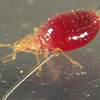
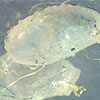

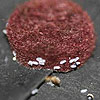
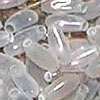
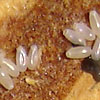
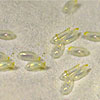
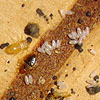


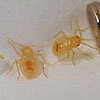
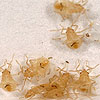
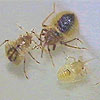
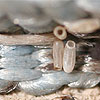
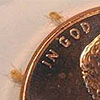
 The bed bug epidemic continues to expand across the United States. The one technology that continues to be viewed by many experts as the best solution for eliminating bed bugs is heat: ThermaPureHeat. On Thursday, 4/29/10 (subject to any breaking news coverage pre-emption) ABC's Nightline will air a segment on bed bugs and treatment options. ThermaPureHeat will be featured as a solution.
The bed bug epidemic continues to expand across the United States. The one technology that continues to be viewed by many experts as the best solution for eliminating bed bugs is heat: ThermaPureHeat. On Thursday, 4/29/10 (subject to any breaking news coverage pre-emption) ABC's Nightline will air a segment on bed bugs and treatment options. ThermaPureHeat will be featured as a solution.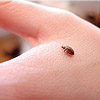 Because these bugs, unlike roaches, for example, do not feed on all kinds of stuff, there is no easy way to kill them with bait type insecticide. They are very hard to get rid of and exterminating them is a very laborous process and a very expensive one. It also entails a pretreatment protocol in which you must clean and bag everything in your home. The cleaning and the throwing away of really infested items makes this nightmare even more expensive.
Because these bugs, unlike roaches, for example, do not feed on all kinds of stuff, there is no easy way to kill them with bait type insecticide. They are very hard to get rid of and exterminating them is a very laborous process and a very expensive one. It also entails a pretreatment protocol in which you must clean and bag everything in your home. The cleaning and the throwing away of really infested items makes this nightmare even more expensive.
 Yes, it's true that bedbugs made an unexpected comeback at the turn of the century after they were all but eradicted by the pesticide DDT in the 1950's. But the man vs. critter appeal of the bedbug narrative has fueled a media frenzy that is difficult to verify with statistics; yet, it's been sending shockwaves through the hospitality sector.
Yes, it's true that bedbugs made an unexpected comeback at the turn of the century after they were all but eradicted by the pesticide DDT in the 1950's. But the man vs. critter appeal of the bedbug narrative has fueled a media frenzy that is difficult to verify with statistics; yet, it's been sending shockwaves through the hospitality sector.